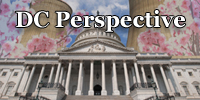Proposed Revisions to Nuclear Plant Release/Public Exposure Regulations: ANS Response to EPA
 In January, the U.S. Environmental Protection Agency issued an Advanced Notice of Proposed Rulemaking (ANPR) concerning 40 CFR 190-the regulations that govern public exposure and release of radioactive materials resulting from normal nuclear power plant operations (it does not pertain to nuclear accidents). The public comment period for the proposed rulemaking ended on August 3.
In January, the U.S. Environmental Protection Agency issued an Advanced Notice of Proposed Rulemaking (ANPR) concerning 40 CFR 190-the regulations that govern public exposure and release of radioactive materials resulting from normal nuclear power plant operations (it does not pertain to nuclear accidents). The public comment period for the proposed rulemaking ended on August 3.
On August 1, the American Nuclear Society submitted a formal comment to the EPA. I also submitted a comment, personally.
EPA ANPR
In the ANPR, the EPA did not make any proposed changes to the regulations. Instead, the ANPR was a proactive solicitation of public input. The EPA asked if 10 CFR 90, which was issued in 1977, should be revised or updated. It also asked for public input on six specific issues or questions:
- Should the 40 CFR 190 public exposure limits be expressed in terms of (individual) dose or health risk?
- If dose limits are used, should the dose calculation methodologies be updated, and if so how?
- Should release limits for specific isotopes be retained (in addition to public dose limits) and should release limits be applied industry-wide or to individual facilities?
- Should a separate groundwater standard be added?
- Should specific rules pertaining to spent fuel and waste storage be added?
- Should revised or new standards be added to address new or emerging technologies (such as new reactor types or fuel cycle technologies)?
Details about the ANPR in general can be found in the EPA notice. More details about the six issues that the EPA sought public comment on can be found in this EPA slide presentation. Also, more information can be found in a July 15 ANS Cafe post by Rod Adams on the EPA ANPR.
ANS response
ANS submitted a response to the ANPR in an August 1 letter. ANS made some general comments, as well as specific comments on each of the six issues listed above. ANS's responses are summarized below:
General
ANS stated that the EPA should move forward with a comprehensive rewrite of 40 CFR 190, due to the substantial advances that have occurred since 1977 in the understanding of the health effects of ionizing radiation, particularly in the area of low-level exposure.
ANS also stated that other things have changed, since 1977, with respect to the overall environmental and health context that applies to radiation standards. Public doses from air travel and medical procedures have increased dramatically since then (with medical procedures alone increasing the average public exposure to ionizing radiation by 200 mrem/year), and no detectable public health impacts have resulted from that increase in exposure. Also, as the negative public health and environmental impacts from fossil-fueled power generation have become more clear, there is more of as consensus that nuclear power has significant environmental benefits that may offset any negative impacts from public radiation exposures.
ANS also stated that while 40 CFR 190 specifically applies to the nuclear power industry, the risk modeling methodologies that form the bases of any requirements or limits should be consistent with those used to regulate other (non-nuclear-industry) sources of public radiation exposure.
Issue 1
ANS stated that an individual, total effective dose limit should be applied, as opposed to any kind of health risk limit.
Issue 2
ANS stated that dosimetry methodologies should be based on "effective dose" and urged the EPA to use standards and methodologies that are consistent with other agencies, such as the U.S. Nuclear Regulatory Commission. ANS also suggested using the effective dose definition used in ICRP Publication 103 (in its response to Issue 1), that document being one of the methodologies suggested by the EPA in its Issue 2 question.
Issue 3
ANS strongly recommended that the EPA revise 40 CFR 190 to discard any radionuclide release limits, as they are "duplicative, unnecessary and inconsistent with international practice." ANS stated that limits on overall individual dose are sufficient to protect public health.
The reason for the radionuclide release limits currently in 40 CFR 190 was that in 1977, large-scale reprocessing was anticipated and there were concerns about long-term buildup (in the environment) from routine radionuclide releases from reprocessing facilities. This issue is far less significant now, given that the United States has not pursued reprocessing. The limits were also based on an extreme application of the linear no-threshold (LNT) theory, with very small doses to very large populations being used to predict significant health impact-something that is now considered questionable scientific practice by most experts.
Issue 4
ANS argued against having any separate regulations or dose criteria for specific public exposure pathways, such as a separate groundwater standard. Instead, limiting total effective dose to an individual, from all pathways, is the best approach for protecting public health.
Issue 5
ANS stated that there should be no specific EPA regulations related to storage of spent fuel and other forms of radioactive waste. Spent fuel and waste storage operations are already rigorously regulated and monitored by the NRC, making EPA involvement unnecessary. Any releases into the environment from storage operations would be covered by limits on overall public exposure (from all nuclear plant operations).
Issue 6
With respect to potential new reactor and/or fuel cycle technologies, ANS reiterated its position that limits on overall exposure (total effective dose) for individual members of the public is the most rational and effective approach for protecting public health. After all, any health impacts will be a function of dose, regardless of the source of that dose. It is clear than any limits on public exposure should be technology-neutral.
My own response
I submitted my own response to the EPA ANPR. My response concurred with ANS positions, and made many of the same points, with a few exceptions.
It is clear that any limits should be on public exposure (dose), and regulations should not distinguish between specific isotopes, pathways, or technologies. While there may be some disagreement over the health risk from a given amount of radiation exposure (rem), there is almost complete agreement that any health impacts from radiation are solely a function of dose (in the case of long-term exposure, at least). The science of dose determination is very well-developed, with the radiological and biological half-lives, and the chemical/biological behavior of various isotopes within the body, being fully accounted for in dose calculations. Dose is dose.
Therefore, it is clear that it is dose, and only dose, that should be controlled. To support the determination of any isotope-specific release limits, the EPA would have to do extensive pathway calculations to equate a given release (of a given isotope) with some predicted dose to a member of the public. That would be duplicative, as plant operators are already required to perform extensive environmental monitoring around the plant sites. This is necessary to determine public doses to comply with EPA and NRC public dose limits. Also, how would any EPA analyses account for differences between various sites (whereas plant operator monitoring and dose calculations are already site-specific)? Limiting dose, as opposed to releases of specific isotopes, maximizes flexibility and places the focus where it should be, i.e., on controlling the maximum overall exposure to members of the public.
As for long-term environmental buildup being a justification for isotope-specific release limits, it seems to me that this problem would be a uniquely small one for the nuclear industry, given the fact that radionuclides decay away (with most of the significant isotopes having relatively short half-lives). Meanwhile, other industries, whose pollutants often do not decay away at all, don't seem to be asked the same questions (mercury from coal plant emissions being one possible example). Instead, the focus seems to be based solely on immediate (present day) health impacts from their pollution, as determined by various epidemiological studies. In the context of Issue 3, I asked the EPA why this question is seemingly only being asked of the nuclear industry.
Where I differed from ANS
While I agree that any regulations should be based on dose, I didn't entirely agree with ANS's position that limits should be placed on individual dose (to some most-exposed member of the public). To be fair, the EPA essentially asked responders to choose between a limit on individual dose or a limit on allowable individual health risk. Given that choice, I would pick a limit on dose, as did ANS. However, I also recommended different, even better, bases for regulations, which were not suggested by the EPA.
Limits on collective dose
Many nuclear professionals believe that repudiating the LNT theory (on low-level exposure health effects) would be key to rationalizing dose (or release) regulations. I've often argued that all we need to do is point out that LNT is being selectively applied (to the nuclear power/weapons industry only).
Current public individual dose limits are determined by using LNT to argue that there is some health risk even at very low doses, and then applying an absurdly low limit on allowable health risk (e.g., a 10-4 or 10-6 lifetime cancer risk). This process results in very low limits on individual exposure, that are only applied to nuclear industry related exposures. Much larger doses from other sources, such as natural background, radon, medical, and air travel are simply ignored (not regulated).
The problem with this "logic" is that if you assume LNT, and that the dose response is truly linear all the way down to zero, it then follows (purely mathematically) that total health impact (i.e., cancers or deaths) scale directly with collective exposure, in man-Rem. As I argued to the EPA, the concept of limiting maximum individual risk is not even meaningful. At the end of the day, you either die (from radiation-induced disease) or you don't, and the number of deaths (which is what you're really trying to avoid) scales directly with collective exposure (man-Rem). Thus, it is hard to justify placing limits on exposure to a (most exposed) individual, as opposed to limiting overall collective public exposure. The only downside to limits on collective exposure is that it may be somewhat harder to determine (or estimate) than maximum individual exposures.
Limits in individual exposure, as opposed to collective exposure, work against nuclear, since any pollution that nuclear plants release (under normal operations or in an accident) tends to stay localized, whereas many forms of pollution from many other industries drift far and wide. I believe that this is one reason why nuclear plant limits are a small fraction of natural background (far too small to have any measurable public health impact) while fossil fuel generators are still allowed to cause ~10,000 deaths in the United States annually (according to the EPA itself).
Also, the other sources of radiation exposure I listed earlier affect most or all the U.S. population, whereas any nuclear plant releases would affect only a handful of local residents. This results in differences in collective exposure that are even more vast than the differences in individual exposure (between nuclear power sources and other sources). The collective exposure that U.S. residents get annually from radon is far larger than the total public collective exposure that will result from the Fukushima accident, yet nothing is done about it. Such exposures are unregulated. Public exposures from U.S. nuclear plants, under normal operation, are about a million times smaller than the public exposures from these other, unregulated sources.
Based on the above reasoning, I asked the EPA to consider limiting collective public exposure from U.S. nuclear plants, as opposed to limiting the exposure to a maximally exposed individual. I also asked the EPA to put any proposed limits on collective exposure in the context of the collective exposures the U.S. public gets from other sources. I essentially asked how they could apply strict controls limiting nuclear operations to tiny public collective exposures while completely ignoring other sources of collective exposure that are a million times larger.
Cost-benefit analysis
The EPA currently performs cost-benefit analyses to justify most of its proposed regulations in most industries. In fact, the EPA even uses a published dollars-per-life-saved figure of ~$10 million per life as the basis for its regulations. This makes sense (to me) as the basis for any regulations, as one shouldn't arbitrarily apply limits on doses, or health risks, regardless of the cost. Such policies allow society's limited public health and safety resources to be applied where they will have the most impact.
Thus, I suggested to the EPA that they go one step further than limiting collective public exposures (man-Rem). I suggested that the best policy of all would be to establish a criterion for how much plant operators should have to spend per public man-Rem avoided. This would be similar to industry ALARA (As Low As Reasonably Achievable) policies currently in place for limiting exposures to plant personnel. If the EPA does not want to leave it up to operators to perform such cost estimates, then, at a minimum, the EPA should keep the $10-million-per-life-saved criterion in mind when determining limits on public collective exposures from plant operations. $10 million per life saved corresponds to a spending requirement of ~$4,000 per man-Rem avoided (based on current LNT estimates of one death per ~2,500 man-Rem). The EPA could consider industry input when determining what limits on public collective exposure would correspond to a cost of ~$4,000 per man-Rem.
I also (again) asked the EPA why nothing at all is being spent to reduce all the other, vastly larger sources of public collective exposure, and inquired about what other practices it should mandate (e.g., radon abatement) that could be performed for $4,000/man-Rem or less.
Distinction between different sources of exposure
ANS alluded to how nuclear industry-related sources of public exposure are treated differently than non-nuclear industry sources when it said that "the risk modeling methodologies that underlie them must be consistent with those used in EPA's regulatory involvement (or lack thereof) pertaining to all other pathways of public exposure to ionizing radiation."
I was more direct. I stated that "with the possible exception of medical exposures (that have an offsetting health benefit), all public exposures should be treated equally by regulations, regardless of source."
It is indefensible to arbitrarily apply strict regulations to some sources of public exposure while ignoring much larger sources of public (collective) exposure. Given this fact, dose limits that are a small fraction of natural background (which ranges up to ~1,000 mrem/year in many places) are hard to justify. When considering collective (as opposed to maximum individual) exposures, strict limits on localized exposures in the vicinity of a nuclear plant are even harder to justify.
Although it is outside the scope of 10 CFR 190, this argument is even more important with respect to setting exposure limits in the event of nuclear accidents. Given the relatively small number of affected people (on the order of 100,000, based on the Fukushima experience), the assumption of LNT should allow individual exposure limits of several Rem/year, as that would still result in overall collective exposures that are smaller than those received routinely by the overall population. Expensive cleanup operations (e.g., to get doses down to 100 mrem/year, as Japan is considering) are hard to justify, given that far larger reductions in overall public collective exposure could be achieved at far lower cost in other areas (such as radon abatement or reducing unnecessary medical exposures).

___________________

Hopf
Jim Hopf is a senior nuclear engineer with more than 20 years of experience in shielding and criticality analysis and design for spent fuel dry storage and transportation systems. He has been involved in nuclear advocacy for 10+ years, and is a member of the ANS Public Information Committee. He is a regular contributor to the ANS Nuclear Cafe.



